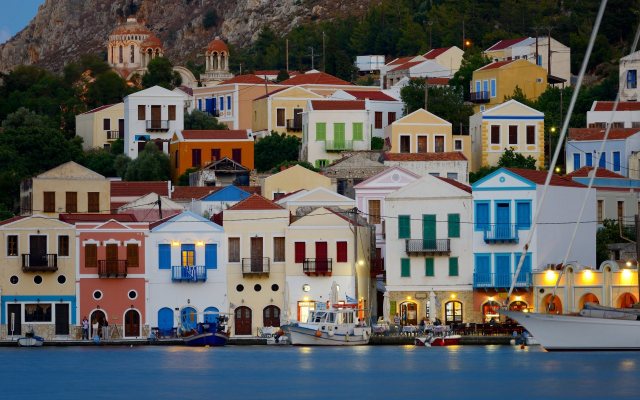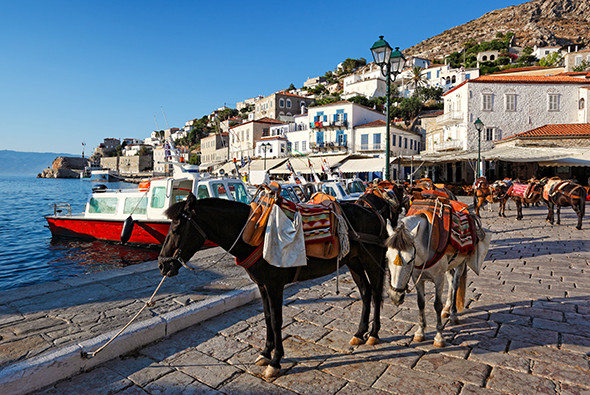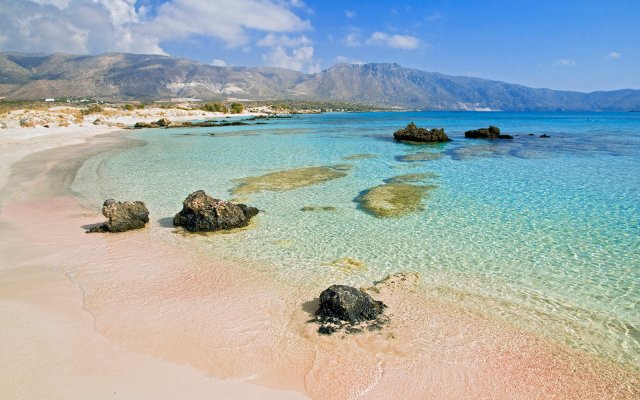It is no secret that Greece is one of the world’s most important touristic destinations. With its unparalleled natural beauty and its profound historic heritage, it has been long attracting not only tourists, but also filmmakers, actors and producers from all over the world. Already from the 1950s, many movies filmed in Greece have contributed to place it as a popular destination in the world tourism map; at the same time, they were able to build and consolidate various romantic stereotypes and perceptions about Greek’s ancient history and mythology, culture, traditions and modern way of life.
If you are stuck in the city, not being able to take a break, never mind! Take this cinematic tour to Greece, admire its natural and cultural wealth through the lens of the world’s largest film studios.… And who knows? Maybe after watching these films you will get inspired to see Greece by yourself!
1) PELOPONNESE: Before Midnight (2013)
Stroll in the narrow roads of Pylos and Kardamyli, eat in famous Lela’s taverna, visit the house of sir Patrick Leigh Fermor, and should you want more glamour, spend a night at Costa Navarino Hotel, while you follow the steps of Ethan Hawke and Julie Delpy in the bittersweet third part of Lindlaker’s marvellous “Before…” trilogy. Read more on the film here.
2) SKOPELOS AND SKIATHOS: Mamma Mia! (2008)
These two super green Sporades islands serve as background for this feel-good musical comedy, a must-see for the fans of Swedish group Abba. Don’t miss the lovely Church of Agios Ioannis Kastri in Skopelos, where the wedding’s scenes were filmed -and many couples followed since them. From there you can enjoy breathtaking views of -equally beautiful- islands of Skiathos and Alonissos.
3) CEPHALONIA: Captain Corelli’s Mandolin (2001)
This time the emerald-like waters of the Ionian Sea are the setting for this classic love story, based on Louis de Bernières’ book. During WWII, Italian Captain Antonio Corelli (Nicholas Cage) falls in love with Cephalonian Pelagia (Penelope Cruz). The island of Cephalonia saw a spectacular touristic increase after the film… It’s actually hard to resist a visit to the island once you see its magnificent beauty! The amazing beaches of Antisamos and Chorgota, and the lovely villages of Sami and Komitata feature in the film.
4) AMORGOS: Le Grand Bleu (The Big Blue, 1988)
Luc Besson directed this beautiful hymn to nature, freedom and friendship that takes place in the deep blue waters of Amorgos island. Famous Agia Anna’s beach and the monastery of Panagia Hozoviotissa can be seen in the film, which has remained as a cult, all-time classic.
5) KASTELLORIZO: Mediterraneo (1991)
This beautiful Oscar-winning Italian comedy was filmed in the island of Kastellorizo, one of the Dodecanese islands. During WW2, a group of Italian soldiers serve in a small Greek island; while in the beginning the locals face them with reticence, little by little they all realize how much they have in common… The colorful, neoclassical houses in the seafront will captivate you.
6) METEORA, CORFU ISLAND: For your eyes only (1981)
In the twelfth of James Bond’s film series, phlegmatic 007 is assigned to hunt for a lost British encryption device, which leads him to beautiful Corfu island. Achillion Palace in Gastouri, atmospheric Agion Spyridon tower in Corfu town and Kanoni Island all appear in the film. In one of the most adrenaline-packed scenes, 007 faces the enemy literally hanging from the rocks of imposing Meteora! In spite of the negative reactions of Meteora’s monastic community, who tried to boycott the film, “For your eyes only” became a massive box office success.
7) ATHENS, OLYMPIA, DELPHI: My Life in Ruins (2009)
Although not as successful as “My Big Fat Greek Wedding“, Nia Vardalos’ second comedy features an American academic who travels to Greece to find her mojo (or “kefi” in Greek). With background the beauty of ancient Greek monuments -the Acropolis, ancient Olympia, Delphi– she also discovers the charm of Greek men.
8) SANTORINI: Summer lovers (1982)
When a conservative American couple goes on summer vacations to Santorini island, the amazing beauty of the place, and their acquaintance with a bohemian French archaeologist will lead them to develop a particular relationship between the three -and to have the vacations of their lifetime. It is certain that if you see this movie you will want to visit this magnificent island -not necessarily to engage in a threesome 😉 – but just to walk its narrow, atmospheric streets and dive into the deep blue waters of the Aegean Sea.
9) HYDRA: Boy on a Dolphin (1957)
This was the first American film shot in Greece. Sophia Loren is a poor diver who collects sponges in picturesque Hydra island. While diving, one day she discovers a gold statue of a boy riding a dolphin, which is said that can fulfill your every desire. The film is considered still to these days one of Hollywood’s classics.
10) MYKONOS: Shirley Valentine (1989)
 This award-winning British romantic comedy- drama is based on a play of the same title. An English middle-age woman, bored with her life, has the opportunity to travel to Greece. Inspired by the beauty of the island of Mykonos, her meaningless life changes forever… It is rumored that the play is actually based on a real life story, and that has inspired many middle-aged women to move to Greece following Shirley Valentine’s steps…
This award-winning British romantic comedy- drama is based on a play of the same title. An English middle-age woman, bored with her life, has the opportunity to travel to Greece. Inspired by the beauty of the island of Mykonos, her meaningless life changes forever… It is rumored that the play is actually based on a real life story, and that has inspired many middle-aged women to move to Greece following Shirley Valentine’s steps…

 11) RHODES: The Guns of Navarone (1961)
11) RHODES: The Guns of Navarone (1961)
 Inspired by the Battle of Leros during the World War II, this classic film describes a fictional battle between the Germans and the Allied for the domination of Navarone island. It stars Gregory Peck, David Niven, Irini Papas and Anthony Quinn. The movie was filmed in the island of Rhodes, which after the film became world famous. Even Anthony Quinn was so impressed by Rhodes that decided to buy a beach in the island. Unfortunately, he was not able to do so due to the infamous greek bureaucracy, but the beach has kept his name: Anthony Quinn Beach.
Inspired by the Battle of Leros during the World War II, this classic film describes a fictional battle between the Germans and the Allied for the domination of Navarone island. It stars Gregory Peck, David Niven, Irini Papas and Anthony Quinn. The movie was filmed in the island of Rhodes, which after the film became world famous. Even Anthony Quinn was so impressed by Rhodes that decided to buy a beach in the island. Unfortunately, he was not able to do so due to the infamous greek bureaucracy, but the beach has kept his name: Anthony Quinn Beach.
12) CRETE: Zorba the Greek (1964)
 No list on films in Greece would be complete without mentioning this quintessential film, which certainly contributed to place Greece among the world’s top tourism destinations, and made syrtaki a mainstream dance. This Oscar-winning movie is based on Nikos Kazantzakis’ book and features music by legendary Mikis Theodorakis. It was filmed in the island of Crete; among the places seen in the movie are the city of Chania, the Akrotiri Peninsula, Apokoronas region and the Beach of Stavros Town, where the famous syrtaki scene was filmed.
No list on films in Greece would be complete without mentioning this quintessential film, which certainly contributed to place Greece among the world’s top tourism destinations, and made syrtaki a mainstream dance. This Oscar-winning movie is based on Nikos Kazantzakis’ book and features music by legendary Mikis Theodorakis. It was filmed in the island of Crete; among the places seen in the movie are the city of Chania, the Akrotiri Peninsula, Apokoronas region and the Beach of Stavros Town, where the famous syrtaki scene was filmed.





















































